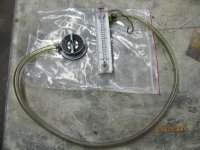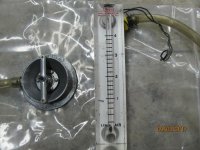I bought a STE snail type SU carb balance tool and unless I am missing something it is useless on a big Healey as when the device is stuck in the carb throat, the scale is impossible to see being under the fender
80.00 well wasted, or is there some extension solution using a moulded hose?
80.00 well wasted, or is there some extension solution using a moulded hose?

 Hi Guest!
Hi Guest!

 smilie in place of the real @
smilie in place of the real @
 Pretty Please - add it to our Events forum(s) and add to the calendar! >>
Pretty Please - add it to our Events forum(s) and add to the calendar! >> 






